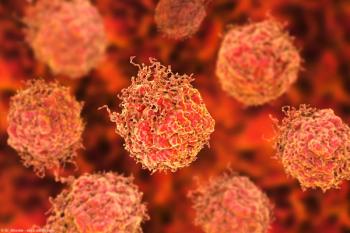
New report adds insight on prostate MRI for monitoring during active surveillance
Based on the findings, investigators recommended that systematic biopsy be performed in patients with negative MRI and in addition to targeted biopsies in men with a positive MRI.
Findings from analyses of data collected in the multicenter prospective Canary Prostate Cancer Active Surveillance Study are adding to the body of literature regarding the utility and shortcomings of prostate magnetic resonance imaging (MRI) in active surveillance of men with low grade prostate cancer.1
Describing their study as the largest cohort data on this topic, the researchers concluded its evidence suggests that a negative MRI in a patient on active surveillance does not ensure a lack of tumor upgrading. Furthermore, based on the findings, they recommended that systematic biopsy be performed in patients with negative MRI and in addition to targeted biopsies in men with a positive MRI.
The follow-up protocol for men enrolled in the Canary study included quarterly PSA testing, semiannual digital rectal examination, and surveillance prostate biopsies at 1 and 2 years after initial diagnosis and biennially thereafter. The performance of prostate MRI was left to the clinician’s discretion as was the technique used for prostate biopsy (cognitive or MRI/ultrasound fusion image guidance and amount of systematic sampling added to targeted biopsy cores). MRI images were graded based on PI-RADS.
To evaluate the diagnostic performance of MRI in active surveillance, the investigators identified men who had Gleason Grade Group less than 2 and a prostate biopsy within 12 months of multiparametric MRI. Their study included a total of 361 men who had 395 MRI studies and a median follow-up of 4.1 years. Of the 395 imaging studies, 284 were classified as positive based on the presence of a PI-RADS 3-5 lesion.
Biopsy reclassification to Gleason Grade Group 2 or greater on post-MRI biopsy was evaluated as the primary outcome, and 108 (27%) of the biopsies met the criterion for reclassification. The evaluation of MRI diagnostic performance showed that it had a positive predictive value of 31% and a negative predictive value of 83%, indicating that a negative MRI would miss a substantial proportion of patients with higher grade cancer. The negative predictive value of MRI was 82% if the definition of a positive MRI was changed to include only PI-RADS 4 or 5 lesions.
The researchers also created multivariable logistic regression models to assess the value of MRI for predicting biopsy reclassification. A base model incorporated only clinical factors (age, body mass index, number of negative biopsies after diagnosis, percent of total biopsy cores containing cancer from the previous biopsy, log-transformed prostate size, and log-transformed serum PSA), and a second model incorporated PI-RADS score.
Although presence of a PI-RADS 5 lesion versus a PI-RADS 1 or 2 lesion was found to be significantly associated with cancer reclassification to Gleason Grade Group 2 or greater, results of receiver operating curve analyses showed that discrimination between patients with and without biopsy reclassification improved only minimally by adding the PI-RADS score to the base model.
Another analysis evaluated the utility of MRI fusion biopsy by comparing the detection of high grade cancer in targeted versus systematic biopsies. It included data from 194 fusion biopsies and showed that the systematic biopsies detected a similar number of unique Gleason Grade Group 2 or higher cancers as the targeted biopsies (25 vs 21).
Commenting on these results, the investigators noted they are consistent with other research showing that targeted biopsies in men undergoing active surveillance may add little for predicting upgrading or reclassification. They stated, “if the goal of surveillance biopsy is to identify higher grade disease, systematic and targeted biopsies should be obtained for men with a region of interest identified on MRI.”
Reference
1. Liss MA, Newcomb LF, Zheng Y, et al.Magnetic resonance imaging for the detection of high grade cancer in the canary prostate active surveillance study. J Urol. 2020;204(4):701-706.doi: 10.1097/JU.0000000000001088
Newsletter
Stay current with the latest urology news and practice-changing insights — sign up now for the essential updates every urologist needs.


















